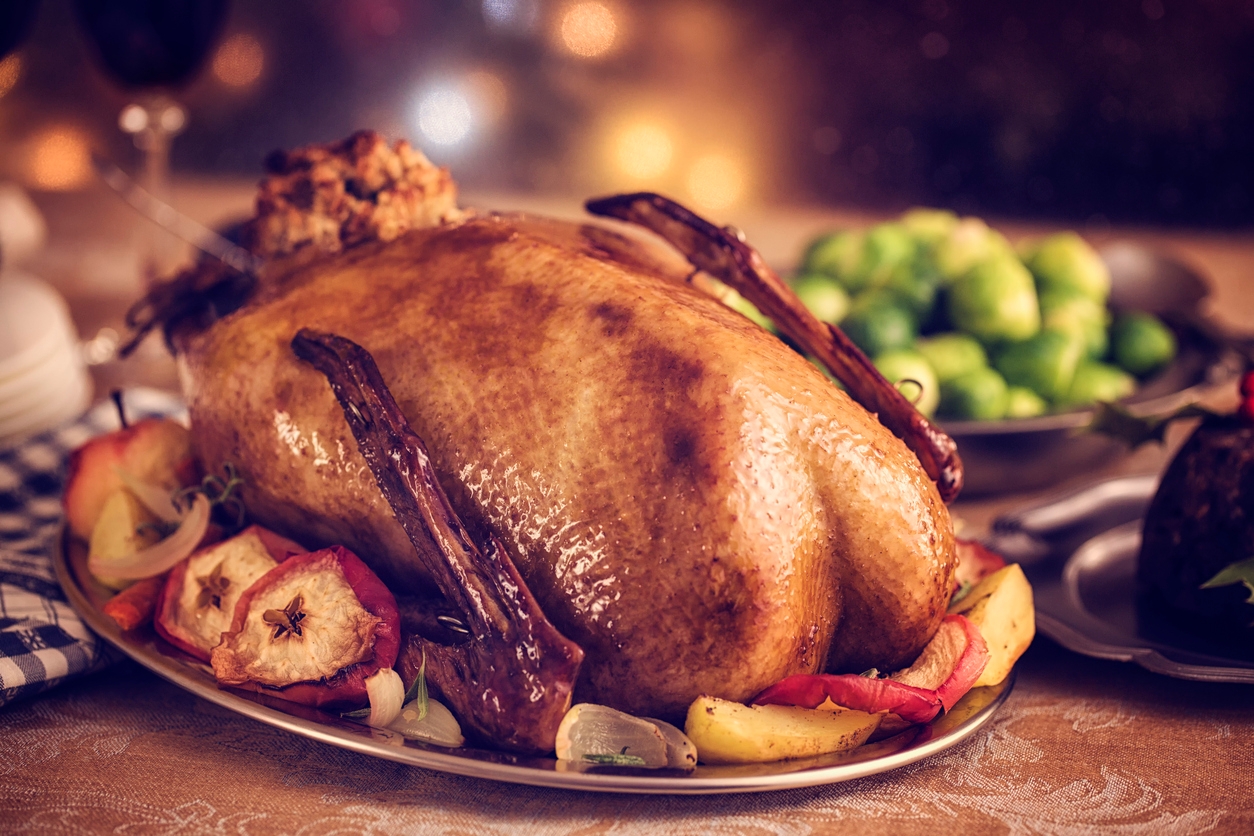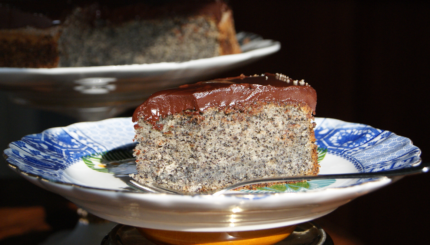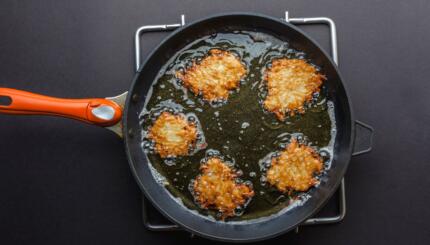I realize that latkes and donuts are iconic foods for Hanukkah, but in my family the holiday wouldn’t be right without our annual goose dinner. It’s the meal we start talking about on Thanksgiving and look forward to for weeks: a big, fat, roasted goose, amber-colored, crispy-skinned, with succulent, richly flavored dark-ish meat, served with braised red cabbage and crusty chunks of potato fried in goose fat and sweet wine-infused gravy.
Why goose? Because many years ago I did some reading about Hanukkah food and discovered that roasted goose was traditional for holiday dinners during the Middle Ages among Jews who lived in the Rhineland and Eastern Europe. Even the illustrious Talmudist Rabbi David Halevi (the “Taz” 1586-1667) spoke of grieven, a delicacy most of us associate with crispy fried chicken skin and fat, but which during his time referred to goose (from the German word griebe, which means melted fat). He noted that goose grieven was a gift given to those who were honored within the community. Sounds good to me!
The first time I made roasted goose it was such a big hit with everyone in my family that it became our tradition. Here’s the bonus: Goose has tons of fat that is white, silky, flavorless and odorless, which makes it perfect for next year’s Passover matzah balls. I pack the fat away in small containers and keep them in my freezer. I took my cue from the great Yiddish author Sholem Aleichem who wrote about how women in the old Russian shtetls would buy young geese in autumn and fatten them up for sale for Hanukkah. They sold the fat too —kosher-for-Passover. In Aleichem’s witty tale, “Geese,” the main character says, “Passover steps into the house smack in the middle of Hanukkah.” The fat was considered so valuable it was worth going to the bother of making their ovens kosher-for-Passover for a day or two.
For our family, besides the actual goose meat and fat, there’s the goose liver: mashed with fried onions and fat — a dab or three on a cracker is memorable stuff. And bones: for stock of course. Nothing is wasted.
The Nosher celebrates the traditions and recipes that have brought Jews together for centuries. Donate today to keep The Nosher's stories and recipes accessible to all.
You must try this sometime!
If you need a kosher goose, act now because you have to order them in advance. Some large supermarkets carry non-kosher geese. The best size goose to cook weighs 10-12 pounds (feeds 6-8 adults; 6 adults and 4 children).
I don’t usually prepare stuffing with goose, but I have served bread-and-apple stuffing on occasion because fruit is a good balance for the rich meat. More commonly I serve homemade applesauce or cranberry sauce or chutney with the other accompaniments.
Ingredients
10-12 lb. goose
lemon juice
kosher salt
freshly ground black pepper to taste
2 apples, cubed
1 large onion, quartered
1-1/2 cups water
1 cup sweet white wine
Directions
Preheat the oven to 400 degrees.
Rinse the goose and remove excess fat. Rub the goose with lemon juice and sprinkle with salt and pepper. Place the apples and onion inside the goose cavity. Tie the legs together with kitchen twine. Prick the skin all over with the tines of a fork.
Place the goose, breast side up, on a rack in a roasting pan. Pour the water into the pan. Roast for 45 minutes.
Lower the oven heat to 325 degrees. Turn the goose breast-side down. Pour the wine over the goose. Roast for 45 minutes, basting once during this time.
Turn the goose breast-side up again and roast for another 30-60 minutes, basting once or twice, or until the juices run clear when you prick the thickest part of the thigh with the tines of a fork (a thermometer inserted into the thickest part of the breast should read 145-160 degrees, depending on whether you prefer the meat slightly rare or well done). Let rest for 15 minutes before carving.
Note: Use a bulb baster to siphon off some of the fat during roasting. To save the fat for future use, strain and let cool. The fat will turn from colorless to white. Skim off any remaining debris from roasting, spoon the fat into small containers and freeze.
Hanukkah
Pronounced: KHAH-nuh-kah, also ha-new-KAH, an eight-day festival commemorating the Maccabees' victory over the Greeks and subsequent rededication of the temple. Falls in the Hebrew month of Kislev, which usually corresponds with December.
kosher
Pronounced: KOH-sher, Origin: Hebrew, adhering to kashrut, the traditional Jewish dietary laws.



